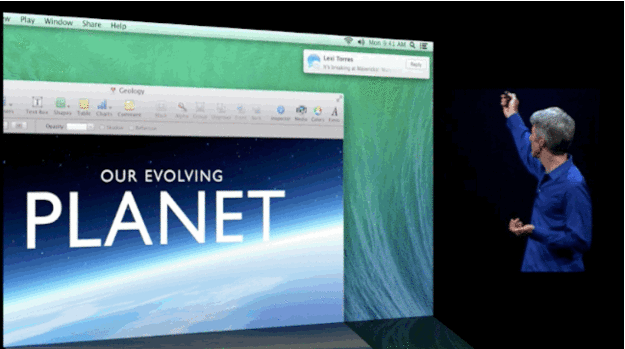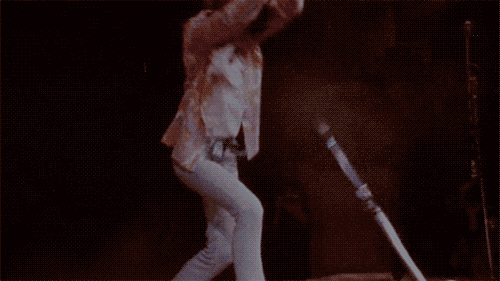There are a lot of benefits of working from home. Your commute is really easy, often you can make your own hours, you have a lot more flexibility in your day-to-day schedule if (and when) emergencies come up, and it’s perfect for self-motivated individuals who don’t want or need someone looking over their shoulder and checking up on them to make sure they are keeping on task.
When I worked an office job doing Windows Server phone support for a major grocery chain, there were two primary applications I had open and that’s it. One of them was Outlook that only received work email and when I left work, I had no way of accessing that email (outside of a company-issued Blackberry that I only used when I was on call). The other application was a ticketing system where issues were sent to my team for us to address. My day-to-day job generally involved going through submitted tickets, calling stores, and connecting to servers to investigate the issue, and going to occasional meetings with my team or the office. There wasn’t a whole lot of email usage, but what there was was usually relevant to my job.
When working from home, there’s a lot more bleeding between work and life. It’s much harder to leave work at work when your office is in your house. I quit that office job eight years ago and have been working from home ever since. I have to be honest, it can be a challenge. It’s still difficult navigating work and life when emergencies come up, like when my car broke down on a trip to California and I had to deal with a mechanic in Nevada for three weeks before having to figure out a way to get it shipped back to Utah for repair. But, despite the difficulties, it can be done, and I’d like to share a single tip that I use to stay focused. It’s called monotasking.
The myth of multitasking
Here’s the thing: despite what you might believe, and despite what your bosses might have told you, humans don’t multitask very well. Research has shown that when you try to juggle multiple tasks simultaneously, you end up being less productive instead of more. If you think about it, you should understand why.
When I start coding something, it takes me a minute to find my place. Maybe I’m working on something that I started yesterday or a few days ago; I need to remember where I was when I left off. If I am then disrupted by something, say an alert popped up from my email, I need to take a second to stop what I am doing, read the notification, and decide whether to act on it or let it go. Now my flow has been broken, and it will take me a few seconds to remember, again, what it was that I was doing before the alert–probably even longer if I chose to respond to that email.
In the digital age, we are constantly being bombarded by notifications. Facebook, Twitter, personal email, work email, texts from home, phone calls, GroupMe, HipChat, Slack, Skype, Google Hangouts…the list goes on, these are just things I have on my phone and laptop and I’m sure you have more. What’s more, these are just the communication apps, the ones where someone is actively trying to get in touch with me. Almost every single app in the App Store creates a notification for something. Apps fight with each other for your attention. Your eyes, and the two seconds it takes you to look at your phone, are valuable commodities–one that companies are willing to spend millions of dollars on.
Every time you break from what you are doing to look at one of these notifications, you are forced to make a decision. Do I look at this notification? Do I respond to this text? Do I read this email? These microdecisions add up. Even if each one takes only a second for the decision to act or not act, it takes as long or longer to shift your focus back to the thing that you were doing before. Over time, this hurts your productivity by making you less able to focus your attention to the task you were working on.
“Ability to multitask” often listed as a requirement for many jobs. Several years ago, NPR ran a story on some research that was being done by neuroscientists on the concept of multitasking. What the study found was that when subjects were given a single task to complete, they performed better and faster than when they were given multiple tasks to complete in the same time frame.
People can’t multitask very well, and when people say they can, they’re deluding themselves…The brain is very good at deluding itself.
— Earl Miller, neuroscientist at MIT
Multitasking, this study showed, isn’t possible for humans. We are not machines, we cannot devote 50% of our brain to one task and 50% of our brain to another task and have them run concurrently. What we do, instead, is switch tasks very quickly. But juggling multiple tasks at the same time can create a huge amount of stress and lead to burnout (which is why our wonderful PMs are such amazing rockstars who have to multitask and do it with a positive attitude–I’m so glad we have them).
This idea resonated with me quite a bit, and forced me to take a look at how I was doing things and reevaluate my workflow. I will admit, I was the type of person who, when an email came in, I instantly switched over to look at and address it. I came from a technical support background where you are judged and evaluated by your response time. When I started freelancing and writing plugins and themes, I prided myself on having a really quick response time and thorough support. But this wasn’t helping me get things done and I was often left feeling like I had multiple fires that all needed to be put out at the same time and was unable to deal with all of them.
Since then, I have altered my workflow around three simple rules that you can start using today to become more productive.
1. Turn off notifications
Pop up notifications like this have to go. These are the primary source of the problem. Along with these, disable any notification on your phone that forces you to make a decision by making a sound or vibration. If you are a Mac user, you should be familiar with the bouncing icon–this should be curtailed as well. Instead, what I do is:
- Desktop pop up notifications disabled completely
- Desktop audio notifications disabled completely
- Bouncing icon alerts limited to chat programs when my name is mentioned specifically and limited to only one bounce. All other bouncing icons limited (as much as is possible)
- All non-critical phone app notifications disabled completely (this includes games, Facebook, news, sports alerts–anything that isn’t using the phone as a communication device)
- Phone email notifications limited to lock screen and badge icon (no sounds or alerts for new emails)
- Phone calls, text messages or HipChat (work) @name mentions use audio notifications
- Other phone chat notifications limited to lock screen and badges only
See what I did there? If you want to get in touch with me, personally, for an emergency or within the context of a work scenario when I’m away from my computer, you can. Other things that are less critical can wait. This keeps my phone in my pocket and prevents me from constantly checking it so I can just focus on the work I need to get done.
2. Decouple from email
This is hard for many people. Like I said, I used to be super-quick when it came to responding to email. Until I realized that doing that prevented me from getting work done. If your job does not necessitate being glued to your inbox, an email can probably wait. Instead of allowing those email notifications to pop up and let me know about new messages, I keep a pinned tab in Chrome open that I can consciously choose to look at (or not) when I have time or a break in what I’m doing.
The result of this is twofold: I rarely look at my work email unless I’m expecting something or actually have the capacity in my brain to deal with it and I don’t look at my personal email at all until I’m no longer working. I also keep a separate Chrome profile for work and personal stuff, and even use a different theme in my work profile, so those things are kept separate in a tangible and visible way.
3. A (relatively) quiet place to work
When I started working from home, I did it shortly after my son was born. I did it for two reasons — to help my wife with kid stuff (and to keep her from going nuts by being cooped up all day), and to at least try to be a part of my kids’ childhoods which I felt like I was missing out on by working forty hours a week in an office. The problem, though, (besides those things distracting me from being able to get work done) was that when my kids got a little older and were maybe doing something mildly irritating like blowing bubbles in their juice, my reaction would be something like this:
That wasn’t helping my relationship with my kids, or my wife, or being very productive to my work. It wasn’t helping anyone, really. And the reason it was happening was, primarily, because these little distractions were taking my focus away from what I was doing.
I’ve moved my workspace to our bedroom, where I can close the door and block out those distractions. If the kids are blowing bubbles in their juice, that’s fine, I can be blissfully ignorant. Since moving my workspace, I’ve found that I’m much more able to focus on my tasks and get things done.
I’ve also found that I work better with some kind of background noise. Not everyone does. I learned this many years ago when doing a data entry temp job. There was a local area network with a bunch of mp3s shared on a network drive. I discovered that I became more productive and willing to do the repetitive data entry tasks when I put on Oingo Boingo, so music as background noise is something I use to motivate myself to work and make working more enjoyable. Since switching to a standing desk setup, music also encourages me to move around more, which helps to keep me from being sedentary and gives me some small amount of exercise.
Recently, I’ve started listening to podcasts in the background as well. I enjoy Major League Soccer, so I have been listening to soccer-related podcasts. In both of these cases, however, I can mostly tune out the words (when listening to music, I often don’t hear the words and listen more to the music itself and the melodies, something that is impossible for my wife to do). I wouldn’t want to listen to a podcast that was trying to give me information that mattered. With the soccer podcasts, I can sort of half listen and still get something out of it, but not feel like I’m doing myself a disservice because I’m missing out on something important. I wouldn’t listen to a podcast on javascript or development or have a WordCamp video running in the background because those things would demand more of my attention. I’d either lose focus on my work to listen to the podcast or watch the presentation, or I’d miss out on any value that the presentation or podcast might have had. I also can’t listen to podcasts when I’m writing something other than code, like a blog post. In those cases, I’ll switch to some music without words that I can throw on in the background or just leave it off until I’m done.
I know a lot of people can’t work with background noise and that’s fine. Not everyone does. I also know that a lot of people need chaos or some kind of activity to act as white noise and work better with stuff happening around them. I work better with less visual stimuli like being in an airport or a coffee shop, but with some amount of audio stimuli like music. I try to do what works best for me and I encourage you to figure out what works best for you.
There isn’t a silver bullet
There isn’t a single solution that works for everyone and not all jobs have the luxury of allowing you to focus on a single task at a time. Maybe your job actually requires juggling several projects at once and you do have to switch between those tasks constantly. In those cases, I’d encourage you to try something like the Pomodoro technique, which gives you a set period of time during which you focus on a single task. Maybe your “task” needs to be a little more broad, like for the next 25 minutes, work only on Project A. Acknowledging that my brain simply isn’t wired to multitask helped me a lot in reducing the amount of work-related stress I experienced and has helped me to make decisions to get out of work environments that demanded that kind of work-related stress.
Do you have tips or lifehacks that you use to stay focused? Share them with us in the comments below!





Comments